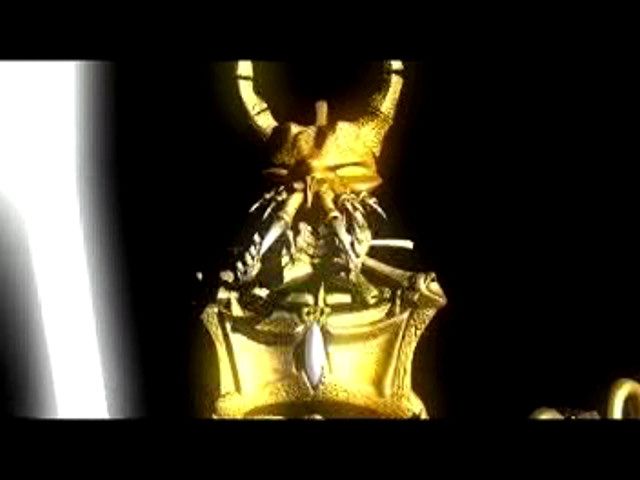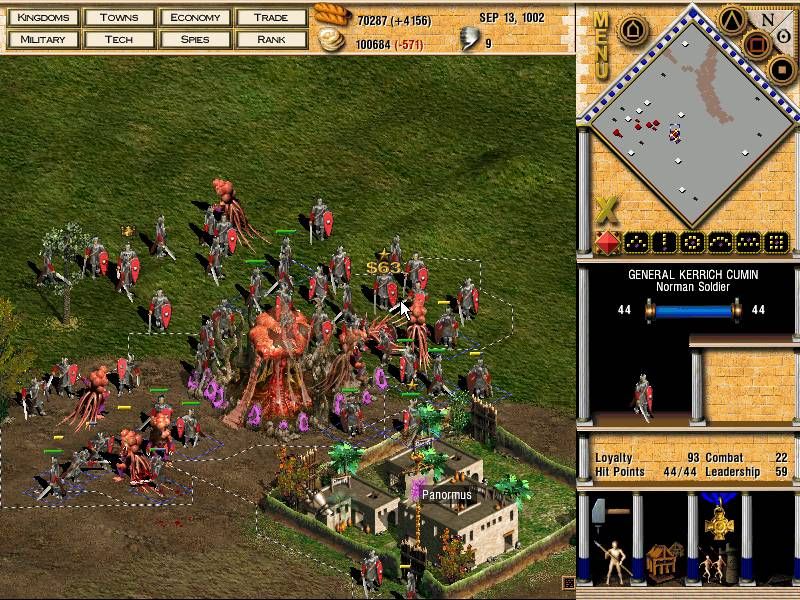Retro Replay Review
Gameplay
Seven Kingdoms II: The Fryhtan Wars delivers a rich blend of empire-building, diplomacy and real-time tactical combat. You’ll begin by choosing one of 12 distinct nationalities, each with its own economic strengths, military units and diplomatic dispositions. Resource gathering—wood, stone, iron and gold—forms the backbone of your kingdom, while research unlocks everything from better armor to powerful siege engines. Building placement matters: forests provide cover, hills grant vision and rivers channel enemy advances.
(HEY YOU!! We hope you enjoy! We try not to run ads. So basically, this is a very expensive hobby running this site. Please consider joining us for updates, forums, and more. Network w/ us to make some cash or friends while retro gaming, and you can win some free retro games for posting. Okay, carry on 👍)
Diplomacy and espionage lie at the heart of your strategic options. Trade treaties, non-aggression pacts and alliances can tip the balance of power, but behind every handshake there’s the risk of spies infiltrating your walls. Cultural traits influence AI behavior: the Japanese focus on precision military units, while the Greeks favor trade and academic research. Meanwhile, the Fryhtans—the monstrous antagonists—emerge from subterranean lairs to ravage your border towns, forcing you to balance offense, defense and negotiation.
The learning curve can be steep, but the payoff is tremendous. Macro-management involves city planning, trade routes and diplomacy, while micro-management tasks you with army composition, siege tactics and unit placement. Each decision has far-reaching consequences: overextend into hostile territory and your core kingdoms suffer, or neglect diplomacy and face a coalition of rivals. Skilled players will appreciate the depth of strategy, as battles often hinge on timing, terrain advantage and alliance coordination.
Graphics
By modern standards, Seven Kingdoms II’s isometric 2D graphics might feel dated, but they remain charming and functional. Detailed sprite work distinguishes each nationality’s unique architecture—from the pagodas of the Japanese to the sprawling temples of the Persians. Unit animations are smooth for their era: cavalry charge with visible momentum, archers draw their bows in crisp frames and Fryhtan monsters lumber menacingly across the battlefield.
The user interface packs a wealth of information without overwhelming the screen. Unit icons, build menus and diplomatic indicators use clear, color-coded symbols so you can quickly assess your situation. The minimap shows resource deposits, city locations and ongoing combat, while overlays highlight terrain features and trade routes. Although submenus can feel dense at first, hotkey customization and context-sensitive tooltips ease accessibility.
Sound effects and ambient music round out the visual presentation. Clashing swords, the roar of Fryhtans and creaking siege engines add atmosphere to each encounter. Background tracks adapt to the ebb and flow of battle, switching from quiet preparation to triumphant fanfares. While audio fidelity is limited by the hardware of the time, the soundtrack remains engaging and reinforces the game’s medieval-fantasy mood.
Story
Rather than a fixed narrative campaign, Seven Kingdoms II offers an emergent story driven by your choices and interactions. As you expand your realm, each diplomatic pact, espionage success and border skirmish weaves a unique saga. The looming threat of the Fryhtan horde provides a unifying backdrop: every kingdom must prepare for the day the subterranean legions break through, or risk total annihilation.
Flavor texts and event notifications lend cultural depth. Hiring foreign advisors yields commentary reflecting each nation’s worldview—Greek philosophers ponder ethics, Vikings boast of conquest, while Chinese strategists emphasize harmony. These textual vignettes, though brief, inject personality into routine tasks and remind you that each kingdom carries its own history and ambitions.
This sandbox approach rewards creativity and replayability. You might forge a diplomatic alliance to contain the Fryhtans one playthrough, or adopt an aggressive pact of mutual destruction in the next. The lack of cinematic cutscenes or linear objectives may disappoint players seeking a scripted hero’s journey, but fans of open-ended strategy will find the freedom to author their own epic tales immensely satisfying.
Overall Experience
Seven Kingdoms II: The Fryhtan Wars stands out as a deep, multi-layered RTS that goes beyond simple base-building and resource grinding. Its innovative diplomacy system, unique national traits and emergent storytelling set it apart from contemporaries. Veteran strategists will relish the interlocking systems of trade, espionage, research and warfare, while newcomers may appreciate the comprehensive tutorial that eases them into the complexity.
Although the graphics and interface show their age, the core mechanics remain compelling. Modern PCs can run the game smoothly with community patches, and fan-made mods enhance balance and visuals. The AI’s diplomatic acuity still surprises: rival kingdoms will break promises, form secret pacts and backstab one another, creating ever-shifting alliances that keep each game fresh.
For players seeking a richly strategic, diplomatic and emergent experience, Seven Kingdoms II: The Fryhtan Wars remains a hidden gem of the late ’90s. Its unique blend of empire management, real-time combat and sandbox storytelling ensures countless hours of replay value. If you’re willing to embrace its depth—and navigate its learning curve—you’ll find a rewarding world of intrigue, conquest and uneasy alliances.
 Retro Replay Retro Replay gaming reviews, news, emulation, geek stuff and more!
Retro Replay Retro Replay gaming reviews, news, emulation, geek stuff and more!









Reviews
There are no reviews yet.